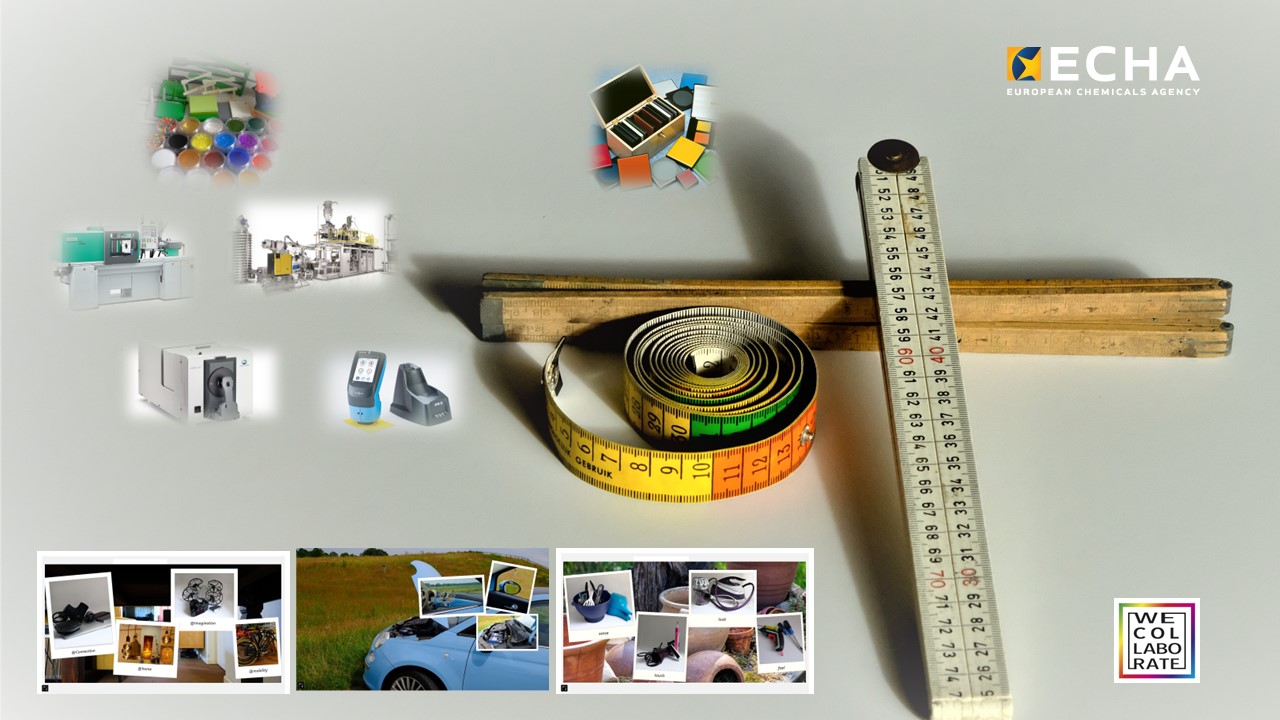Safe use of chemicals.

Because of an interesting question from a friend who is also a Freelancer and with important and good input from former colleagues, I recently delved into EU legislation regarding the use of pigments and dyes in Engineering Materials, specifically for food contact materials.
For the import and production of chemical substances (above 1000 kg) there has been the necessary entry in REACH for quite some time, with legislation officially since 2007 (Register, Evaluation, Authorization and restriction of CHemicals) , but the required DoC - Declaration of Conformity - documentation has, with no exceptions possible since last September, been added.
But who should draft it, what should it contain, what should you analyse and test, who checks this and what does it all cost?
The answer to these questions is, as usual, not easy!
And especially not for suppliers of pigments and dyes. Because the regulation (EU) No. 10/2011 applies to all producers of plastics and/or masterbatches, but pigments and dyes are not described in more detail therein, except that they are subject to local legislation. And then you have to deal with 28 countries (!) and legislation in the local language; just have a look at the Dutch “NL-warenwet” (in combination with EU regulation no. 1935/2004!), the German “BFR Emfhehlung 9” and the French “Circular n176 du 2 December 1959”.
And no local law exists in all languages ??of the EU countries! Before you know it, you can no longer see the forest for the trees.
And then you want to sell pigments and dyes in the EU, but every potential customer asks about DoCs; whether or not they are used in food contact materials is no longer important.
Then there is the many (sometimes well-intentioned) advice from agencies that can "help" you with the testing, evaluation and drafting of the documents; and all for not a very small fee. A basic entry DoC can easily cost several thousand euros per chemical! And if you are a large company with high volumes and margins, then it will certainly be done, but for SMEs and the average Freelancer with lower volumes, these are sizeable financial barriers.
What is wise here and what is needed? In essence, it's about safety! Safety of the chemicals for the environment, safety in the use of chemicals in the production of materials and safety in the daily use of those materials by people, animals and plants.
So, safety comes first throughout the entire value chain of chemicals and materials, which means that anyone and every company involved in the import, production or sale of chemicals and materials for food applications within the EU must take responsibility and must create proper full DoCs.
In essence, it is therefore all about Product Stewardship!
“Product Stewardship is the act of minimising the health, safety, environmental, and social impacts of a product and its packaging throughout all lifecycle stages, while also maximizing economic benefits.” (quote Sphera, VS)
In practice, that means that each supplier demonstrates ownership, has and provides information on the safety of the chemical and/or product, creates and provides DoCs and conforms to all aspects and requirements of “Good Manufacturing Practices” (GMP, EU regulation e.g. no. 2023/2006).
And that also means that every supplier in the value chain has to take on his/her own part and create DoCs for that.
But what does this mean in practical terms for the suppliers of pigments and dyes?
First and foremost, I can recommend a reliable expert to anyone who has your situation in mind and who doesn't come up with all kinds of money-wasting suggestions! But for those who don't have one, the following pragmatic approach could apply:
- Know the full chemistry and chemical composition of your pigments and dyes and know what is chemically bonded and free.
- Check these compounds (type and quantity) on the basis of Regulation EU No. 10/2011
in combination with, for example, the NL-warenwet and the DE-BFR Emfhehlung 9. - Check the FR-Circular n176 du 2 December 1959 with permitted pigments and dyes list
whether your material is on there. - Write down all the information you have about the pigment or dye and by what laws,
regulations and guidelines you have reviewed these, together with your contact details, in a
DoC format and provide it to your customer; they can use this to compose their own
relevant DoCs for, among other things, REACH and the compliance check by ECHA. - If your customer nevertheless wishes you to perform certain migration tests (or other tests), which the customer should actually do it him/her-self (!), then consult with the customer whether this makes the difference make in whether or not to purchase; make sure you at least obtain very accurate specific information about which test in which polymer or plastic.
Bear in mind that it is (financially) impossible for suppliers of pigments and dyes to test all local laws and to perform all migration tests in all polymers and plastics.
And remember that your customer must also show his/her own Product Stewardship in his/her part of the value chain and life cycle!
Feel free to contact us or request a quotation




